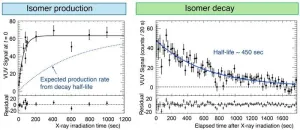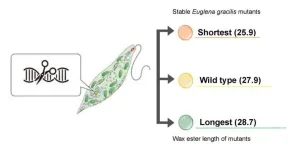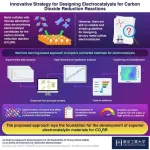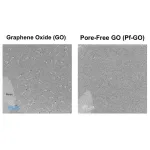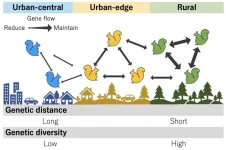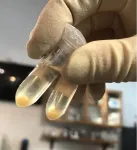(Press-News.org) Atlanta, Georgia - In the wake of mounting evidence for the efficacy of psychedelic-assisted therapies, the U.S. Food and Drug Administration (FDA) is considering approving psilocybin, the active ingredient in “magic mushrooms,” for treating depression in the near future. As this watershed moment approaches, a critical question arises: Just how many people might stand to benefit from this promising but still unproven therapy?
Shedding light on this high-stakes inquiry, a first-of-its-kind peer-reviewed study led by researchers at Emory University, the University of Wisconsin-Madison and UC Berkeley, and that will be published in Psychedelics (ISSN: 2997-2671, Genomic Press, New York) on 24 September 2024 has generated initial estimates of the potential demand for psilocybin-assisted therapy for depression in the United States. By analyzing national survey data on depression prevalence and treatment in conjunction with the eligibility criteria from recent landmark clinical trials, the researchers determined that between 56% and 62% of patients currently receiving treatment for depression—amounting to a staggering 5.1 to 5.6 million individuals—could qualify for psilocybin therapy if approved.
“Our findings suggest that if the FDA gives the green light, psilocybin-assisted therapy has the potential to help millions of Americans who suffer from depression” said Syed Fayzan Rab, an Emory MD candidate and the study's lead author. “This underscores the importance of understanding the practical realities of rolling out this novel treatment on a large scale.”
To arrive at their projections, the researchers first determined that of the nearly 15 million American adults with depression, about 9 million receive treatment in a given year. They then evaluated this population against various eligibility criteria used in recent clinical trials of psilocybin for depression. Their analysis generated a range of estimates: a “lower-bound” of 24% of patients eligible if the strict criteria of initial trials were applied, a “mid-range” of 56% based on criteria likely to be used in real-world medical settings, and an “upper-bound” of 62% after accounting for patients with multiple exclusionary conditions.
Notably, nearly a third of the lower-bound to mid-range jump resulted from the inclusion of patients with alcohol and substance use disorders, for whom growing evidence suggests psilocybin may actually be beneficial rather than contraindicated. However, even the 62% upper-bound estimate is likely conservative, as the analysis focused only on currently treated individuals and did not account for the potential influx of new patients drawn by the appeal of psychedelic medicine.
The researchers caution that these projections are highly contingent on the precise FDA approval parameters and subsequent real-world implementation factors. Insurance coverage decisions, availability of trained practitioners, and regional variations in access could all considerably constrain the ultimate uptake of psilocybin therapy. Additionally, if approval encompasses off-label use for conditions beyond depression, demand could further surge in unpredictable ways.
“While our analysis is a crucial first step, we've only scratched the surface in understanding the true public health impact psilocybin therapy may have,” said Dr. Charles Raison, a collaborator on the study and the lead investigator on one of the largest clinical trials looking at the efficacy of psilocybin therapy for depression. "Ultimately, the realizable potential of this treatment rests in the hands of regulatory bodies, policymakers, insurers, and the healthcare community at large. It's our hope that these findings spur productive discussions and proactive preparations to optimize the benefit to patients while minimizing unintended consequences."
As the psychedelic renaissance continues to gather momentum, this study provides a vital glimpse into the promise and challenges that may lie ahead. With millions of lives potentially in the balance, it underscores the urgency of further research to refine demand estimates and inform equitable, effective delivery of psilocybin therapy should it gain approval.
The peer-reviewed study, “An Estimate of the Number of People with Clinical Depression Eligible for Psilocybin-Assisted Therapy in the United States,” will be published on 24 September 2024 and will be freely available online at the website of Psychedelics (Genomic Press, New York): https://pp.genomicpress.com/aop/.
About Psychedelics – Psychedelics: The Journal of Psychedelic Pharmacology (ISSN: 2997-2671) is a peer-reviewed journal published by Genomic Press, New York. The journal is exclusively dedicated to the latest advancements in the realm of psychedelic substances and their potential therapeutic uses. Psychedelics embraces the full spectrum of research, from fundamental investigations to cutting-edge clinical studies and welcomes diverse perspectives and contributions, advancing the understanding of psychedelic compounds.
To obtain a confidential pre-print before the embargo date, contact: Fayzan Rab. Emory University School of Medicine: syed.f.rab@emory.edu
END
Millions of depressed Americans could benefit from psychedelic therapy, study finds
New analysis reveals over half of patients treated for depression may be eligible for psilocybin-assisted therapy if FDA-approved
2024-09-13
ELSE PRESS RELEASES FROM THIS DATE:
Towards the realization of compact and portable nuclear clocks
2024-09-13
Scientists use atomic clocks to measure ‘second,’ the smallest standard unit of time, with great precision. These clocks use natural oscillations of electrons in atoms, similar to how pendulums work in old grandfather clocks. The quest for an even more precise timekeeper led to the discovery of nuclear clocks, which use the transitions of atomic nuclei instead of electrons to keep time.
A rising contender for the development of ultra-precise nuclear optical clocks is the nuclear first-excited state of 229Th isotope. Its long half-life of 103 seconds and low excitation energy of a few electron ...
Global warming's economic blow: Risks rise more rapidly for the rich
2024-09-13
In a new study by the Potsdam Institute for Climate Impact Research (PIK), researchers analysed how erratic weather events, increasingly intensified by global warming, affect global production and consumption across different income groups. The results confirm previous studies that the poorest people worldwide bear the greatest economic risks from climate change. Surprisingly, the risk for the wealthy is growing the fastest. Economies in transition like Brazil or China are also highly vulnerable to severe impacts and negative trade ...
CRISPR/Cas9 modifies euglena to create potential biofuel source
2024-09-13
News about biofuels sometimes mentions used cooking oil as a feedstock, but if these substances contain animal fat, they can solidify in colder temperatures. This happens because, chemically, the fatty acids of these and many other saturated fats have long carbon chains with single bonds. Enter the euglena. An Osaka Metropolitan University team has found a way to have one species of this microalgae produce wax esters with shorter carbon chains than usual.
Using CRISPR/Cas9 to edit the genome of Euglena gracilis, Dr. Masami Nakazawa and her team at the Graduate School of Agriculture’s ...
New 'PVDF alternative battery binder' surpasses EU environmental regulations!
2024-09-13
A team led by Dr. Hyeon-Gyun Im and Dr. Dong Jun Kang from the Insulation Materials Research Center of Korea Electrotechnology Research Institute (KERI), in collaboration with Dr. Jung-keun Yoo from KIST and Professor Jong-soon Kim from Sungkyunkwan University, have developed a technology that enhances the performance of binders—often the 'unsung heroes' in the field of secondary batteries—while using environmentally friendly materials. This technology has been published in a prestigious international ...
The Menopause Society launches Making Menopause Work™ Initiative
2024-09-13
CHICAGO (Sept 13, 2024)—Menopause is a natural life transition occurring when many women are at the “top of their game.” Unsupported menopause symptoms drive up employer healthcare costs and cause roughly $1.8 billion in missed workdays. To help employers retain these valued workers and build cultures of well-being, The Menopause Society launched Making Menopause Work™ based on new science-based Consensus Recommendations. The Recommendations are published online in Menopause, the journal of The Menopause ...
Exploring ternary metal sulfides as electrocatalyst for carbon dioxide reduction reactions
2024-09-13
One of the most promising avenues for actively reducing CO2 levels in the atmosphere is recycling it into valuable chemicals via electrocatalytic CO2 reduction reactions. With a suitable electrocatalyst, this can be achieved under mild conditions and at a low energy cost. Many types of electrocatalysts are being actively investigated, but most suffer from either low electrocatalytic activity, poor selectivity, or low stability.
Metal sulfides might hold the huge potential solution to this puzzle. By combining ionic and covalent characteristics, this unique family of materials offers good catalytic activity and energy efficiency. The ternary metal system is expected to be a better ...
Breakthrough in proton barrier films using pore-free graphene oxide
2024-09-13
Kumamoto University’s research team, led by Assistant Professor Kazuto Hatakeyama and Professor Shintaro Ida of Institute of Industrial Nanomaterials, has announced a groundbreaking development in hydrogen ion barrier films using graphene oxide (GO) that lacks internal pores. This innovative approach promises significant advancements in protective coatings for various applications.
In their study, the research team successfully synthesized and developed a thin film from a new form of graphene oxide that does not contain pores. Traditionally, ...
Urbanization has impacted the population genetic structure of the Eurasian red squirrel in Japan within a short period of 30 years
2024-09-13
Since many kinds of wildlife have started living in urban environments, urban environments have been recognized as places of biodiversity conservation. What kind of factors facilitate or prohibit wildlife from living in urban environments? Understanding the population genetic structure of urban wildlife living would suggest the hint. In this study, we investigated the population genetic structure of Eurasian red squirrels living in urban to rural areas in Obihiro City, Hokkaido, Japan. As a result, we found that ...
Experimental mRNA cancer vaccine shows potential for advanced stage cancer patients in Phase 1 trial
2024-09-13
Interim data from the Phase I dose escalation part of the mRNA cancer immunotherapy (mRNA-4359), show promise in patients with advanced solid cancers.
The investigational mRNA cancer immunotherapy is targeted for patients with lung cancer, melanoma and other solid tumours. Nineteen patients with advanced stage cancers received between one and nine doses of the immunotherapy treatment. Scientists have found the immunotherapy created an immune response against cancer and was well tolerated, with adverse events ...
Rapid new blood diagnostic test for ALS
2024-09-13
(Jackson, Wyoming – Embargoed until Thursday 12 September 2024 8:00 PM EDT)
A highly accurate diagnostic blood test has been developed for amyotrophic lateral sclerosis (ALS), a progressive neurodegenerative disease that effects neurons in the brain and spinal cord.
ALS leads to gradual paralysis, ultimately resulting in the inability to walk, speak, or, in later stages, move. Currently, diagnosis is based on a thorough clinical examination, but it can take up to 12 months to provide a definitive diagnosis, by which time many patients have significantly ...
LAST 30 PRESS RELEASES:
Chicago health information leader recognized for raising CPR readiness and blood pressure awareness
The Intimate Animal, a new book from Kinsey Institute Executive Director Dr. Justin Garcia
When blue-collar workers lose union protection, they try self-employment
New video dataset to advance AI for health care
MEA-based graph deviation network for early autism syndrome signatures in human forebrain organoids
New modeling approach sheds light on rare gut disease
Study documents potentially hazardous flame retardants in firefighter gear
Can certain bacteria regulate aging of the immune system and its related alterations?
AI model helps diagnose often undetected heart disease from simple EKG
There are fewer online trolls than people think
Cell membrane fluctuations produce electricity
Jeonbuk National University study shows positive parenting can protect adolescents against self-harm
Surface-engineered ZnO nanocrystals to tackle perfluoroalkyl substance contamination
This new understanding of T cell receptors may improve cancer immunotherapies
A new fossil face sheds light on early migrations of ancient human ancestor
A new immunotherapy approach could work for many types of cancer
A new way to diagnose deadly lung infections and save lives
40 percent of MRI signals do not correspond to actual brain activity
How brain-inspired algorithms could drive down AI energy costs
Gum disease may be linked to plaque buildup in arteries, higher risk of major CVD events
Contrails are a major driver of aviation’s climate impact
Structure of dopamine-releasing neurons relates to the type of circuits they form for smell-processing
Reducing social isolation protects the brain in later life
Keeping the heart healthy increases longevity even after cancer
Young adults commonly mix cannabis with nicotine and tobacco
Comprehensive review illuminates tau protein's dual nature in brain health, disease, and emerging psychiatric connections
Book prepares K-12 leaders for the next public health crisis
Storms in the Southern Ocean mitigates global warming
Seals on the move: Research reveals key data for offshore development and international ecology
Sports injuries sustained during your period might be more severe
[Press-News.org] Millions of depressed Americans could benefit from psychedelic therapy, study findsNew analysis reveals over half of patients treated for depression may be eligible for psilocybin-assisted therapy if FDA-approved
